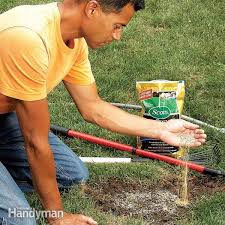 According to Diversified Mosquito and Turf Care, cool season grasses are those that grow well in cold winters and mild summers. These types of grass offer the best growth rates when the temperature is somewhere between 65-80 degrees Fahrenheit.
According to Diversified Mosquito and Turf Care, cool season grasses are those that grow well in cold winters and mild summers. These types of grass offer the best growth rates when the temperature is somewhere between 65-80 degrees Fahrenheit.
The most common cool season grass species that grow quite well in Minnesota are the Kentucky bluegrass, perennial ryegrass and the fine fescue. Most of the time, the seeds are mixed together in order to accommodate different requirements like high-traffic areas or lawns that have lots of sun or those with lots of shade.
When selecting which type of grass to grow on your lawn you need to ask yourself some important questions. Does my lawn have sun or shade for the most part of the day? Will I expect regular heavy traffic? Do I want my neighbors jaws to drop when they see my perfect lawn but with little maintenance requirements?
Shady Lawns
 If you are looking at a shady lawn for most times of the day, turf care experts recommend seed mixtures with some shade tolerance. The perfect example for this is the fine fescues and Kentucky bluegrass.
If you are looking at a shady lawn for most times of the day, turf care experts recommend seed mixtures with some shade tolerance. The perfect example for this is the fine fescues and Kentucky bluegrass.
Sunny Lawns
If you own a lawn that is exposed to the sun all day then it is recommended that you use a mixture of 50% Kentucky bluegrass and 50% perennial ryegrasses.
Stunning but Low Maintenance

If you want a lawn that is the envy of your neighbors but do not want to spend too much time maintaining it then the best choice for you would have to be a mixture of fine fescues and Kentucky bluegrass.
Turf Care – What To Avoid
Annual Ryegrass
This is a cheap type of grass commonly used as a substitute for warm season grass lawns during the winter when they become dormant in order to provide color.
Tall Fescue
They do not grow very well in Minnesota because of their coarse texture and limited durability.